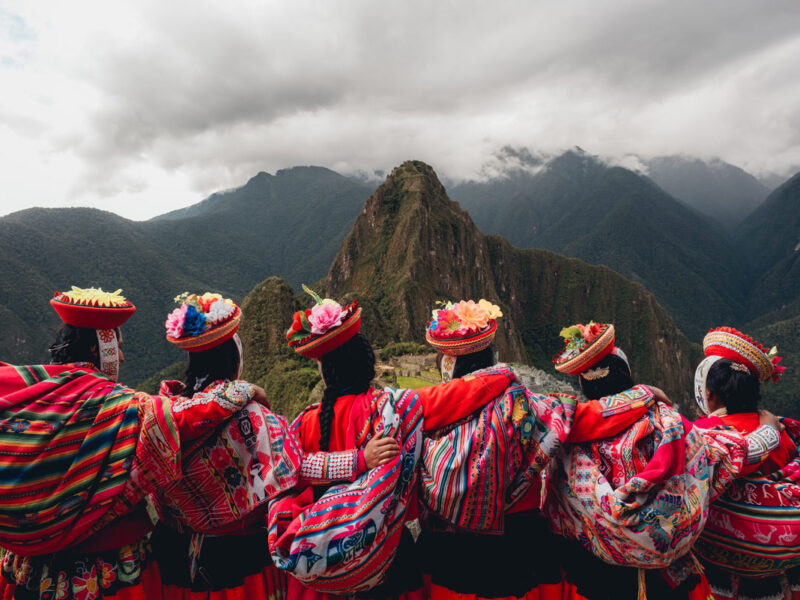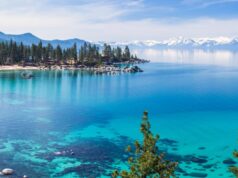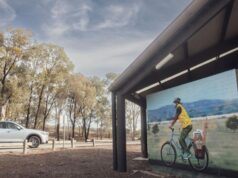
Image credit: Ryan Bolton for Intrepid Travel
Exploring Peru and its famous sites is even more meaningful when the moments are shared with members of the local community.
Arms linked, they stand together, a bright blaze of colour unfurled like a ribbon amid the muted green tones and ethereal mist of the cloud forest. A low rumble of thunder reverberates through the jungle-coated mountains, bouncing off Machu Picchu’s vertiginous terraces and threatening to shake the 15th-century fortress off its improbable perch and send it crumbling into the frothing brown Urubamba River, 600 metres below. But the 16 women from Huilloc Alto, a tiny mountain village high in Peru’s Sacred Valley, look completely at peace, gazing down silently – almost defiantly – on the famous citadel their ancestors built, a place they never thought they’d see with their own eyes. Today is their ultimate homecoming.
“The mamas were so happy when they learned they were going to Machu Picchu, they were jumping,” says our Intrepid Travel guide Norma Caller who, like the ‘mamas’, speaks Quechua, the Indigenous language of the Inca Empire. It’s been almost 500 years since the Spanish conquest of Peru, but the cultural dislocation caused by colonisation is still felt acutely, especially here in the highlands. Machu Picchu is special because the Conquistadors never found it, so could never destroy it.
Managing the surging numbers of tourists wanting to visit the UNESCO World Heritage site is a hot-button topic in Peru. Daily visitor capacity has been raised to 5600 during peak season, but the cruel irony is that the Indigenous people to whom Machu Picchu means the most will likely never be able to afford to go there.
Read the full story here


